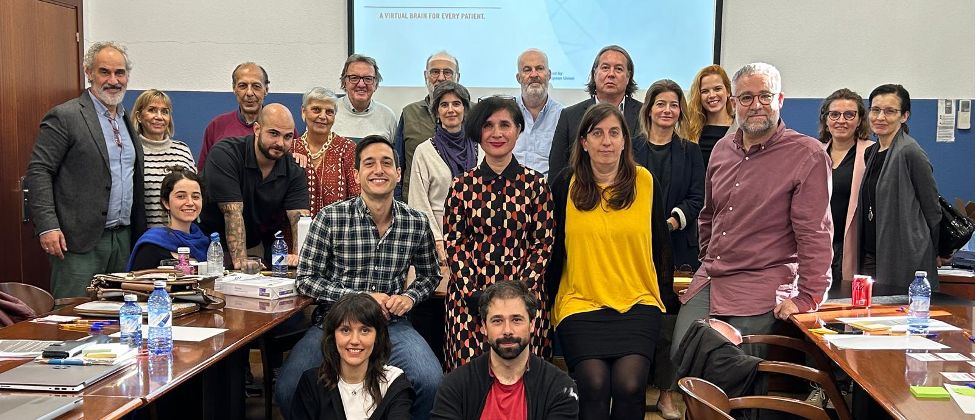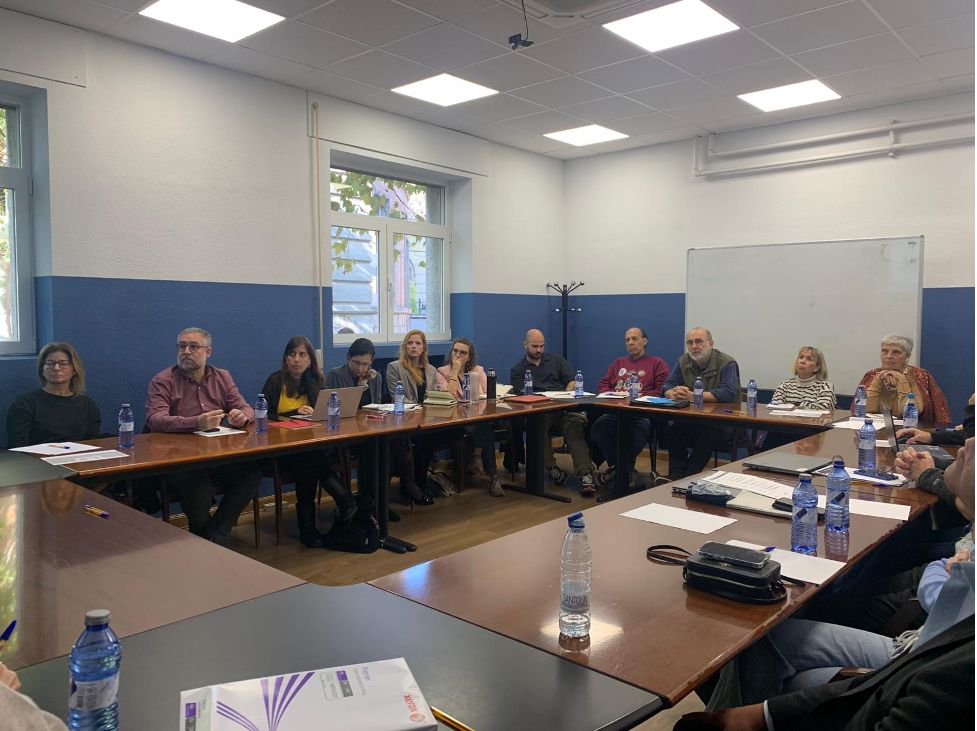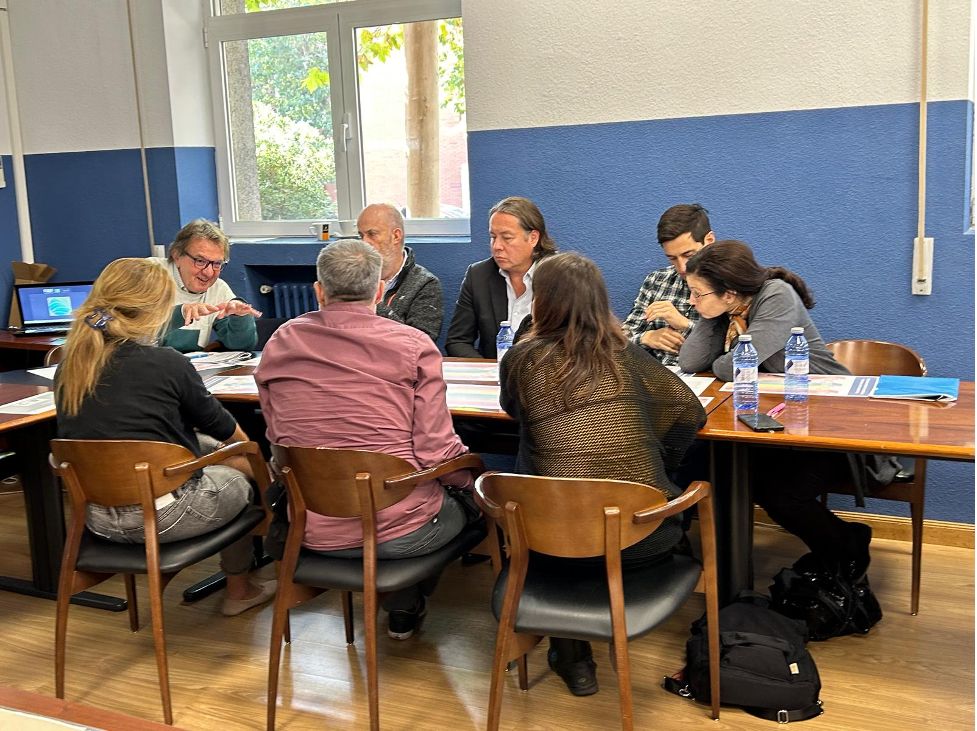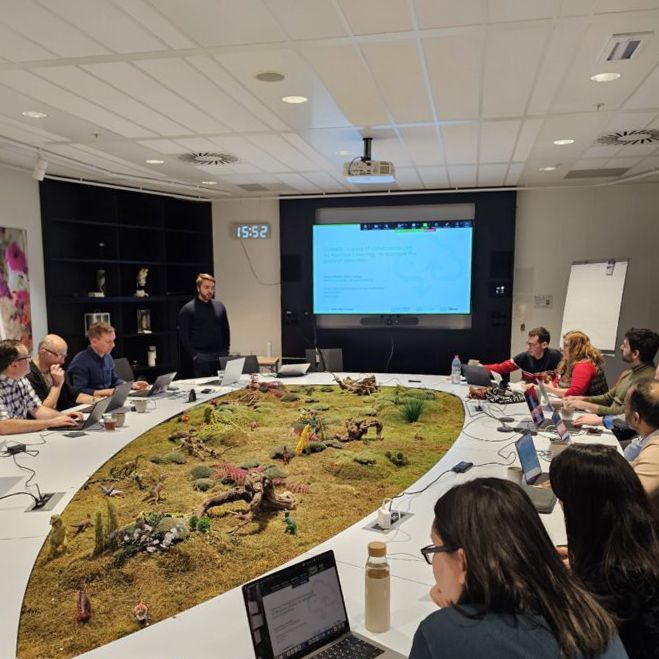
First Design Co-Lab within the Virtual Brain Twin Project Takes Place in Madrid

The event was attended by psychiatrists, neuroscientists, UPM innovation researchers, experts and people with lived experience in schizophrenia, and their relatives. It presented a unique opportunity to engage in a dialogue about schizophrenia from academic, scientific, clinical and social perspectives, including the experiences and insights of families affected by that condition.
Once the UPM team - leader of the VBT Dissemination, Communication, and Exploitation tasks - delivered a quick description of the EBRAINS ecosystem, the VBT project rationales and the workshop dynamics, Sandra Diaz from Forschungszentrum Jülich presented ‘Setting the Stage – Introducing the Virtual Brain Twin: Vision, Objectives, and Future.’ She gave an overview of the Virtual Brain Twin project and explained how this EBRAINS-coordinated initiative is addressing the creation of virtual brain twins for psychiatric patients. The goal is to guide clinicians in optimising medication type and dosage and exploring alternative treatments like brain stimulation and lifestyle changes.

Diaz highlighted the co-design process of the project. Clinicians offer patients and their families information about the expected therapeutic outcome of treatment. Persons with lived experience can then provide feedback on the usability of the information. She emphasised how essential this process is for the successful adoption of virtual brain twin technology in treating those persons.
Afterwards, Gerrit Tiefenthal, from the University of Bonn, presented ‘Addressing Core Challenges – Ethical, Practical, and Collaborative Dimensions of the VBT’. He outlined the five basic ethical dimensions of the project: Dignity, Autonomy, Integrity, Privacy, and Responsibility.

He underscored some of the ethical challenges the project will tackle, such as:
How to guarantee respect for human dignity for people with lived experience with schizophrenia and their relatives?
How and to what extent can people with lived experience be involved in shared decision-making on therapy?
How to balance the conflict between the right to privacy of people with lived experience and the researchers’ and clinicians’ need for data?
Who is responsible for weighing risks, and how?
His presentation prompted a thought-provoking discussion among the attendees of the event.
During the morning, Erik Van der Eycken and John Saunders, from GAMIAN-Europe and EUFAMI respectively, highlighted the importance of active participation and representation of individuals with personal experience of a diagnosis and their family members in projects like VBT, thus ensuring that research aligns closely with the lived realities and needs of those it aims to serve. GAMIAN-Europe is a non-profit, patient-driven pan-European organisation, representing and advocating the interests and rights of persons affected by mental ill health. EUFAMI is the European Federation of Associations of Families of People with Mental Illness. Both associations, together with the EPA - European Psychiatric Association – have had an active role in the organisation of this workshop and, in general, in the VBT project as partners.
The Co-Lab continued with three dynamic and interactive activities that brought together all the different stakeholders towards a shared objective: contributing to design an inclusive and effective Virtual Brain Twin platform for personalised treatment of schizophrenia.

Here are some key highlights from the three breakout sessions:
Session 1 · Collaborative Co-Creation: Exploring Perspectives on the Virtual Brain Twin Platform. This activity involved participants filling out customised templates designed specifically for their stakeholder group. Each group received an ad hoc template of questions tailored to their unique role and perspective. This provided a comprehensive overview of how each stakeholder group perceives the Virtual Brain Twin platform. The input collected during this activity helped identify key expectations, potential contributions, and unique requirements from each group, which will serve as foundational elements for aligning the platform’s features with users’ needs.

Session 2 · Innovating through Personas: Mapping User Challenges and Opportunities. This activity focused on creating fictional profiles (personas) that represent different types of potential users of the Virtual Brain Twin. Through these personas, participants identified the main challenges or "pain points" these users may encounter when using the tool, as well as potential benefits or "gain points." This process helped highlight potential obstacles to adoption and guided the design process to ensure inclusivity. The insights gathered provided a clearer understanding of user journeys and highlighted areas where improvements are needed, informing targeted strategies for user engagement and tool optimisation.
Session 3 · Interdisciplinary Insights: Shaping the Future of the Virtual Brain Twin Together. In this activity, each attendee, after listening to the presentations throughout the day and reflecting collectively on the tool through the dynamics, participated in a brainstorming session of ideas and future recommendations for the design of the VBT platform. The collected input from this brainstorming session will be used to outline specific action points and refine the project roadmap to ensure that the platform remains user-centred and addresses the diverse needs of all stakeholders involved.
News & events
All news & events
- News05 Mar 2025


